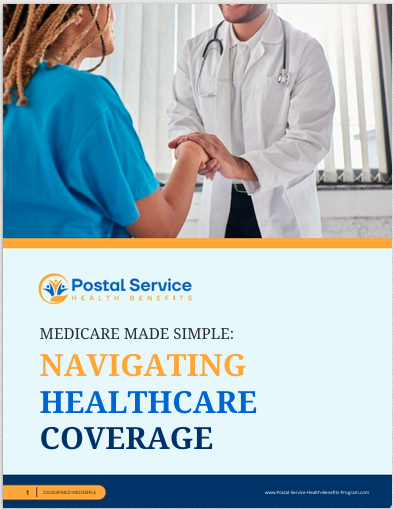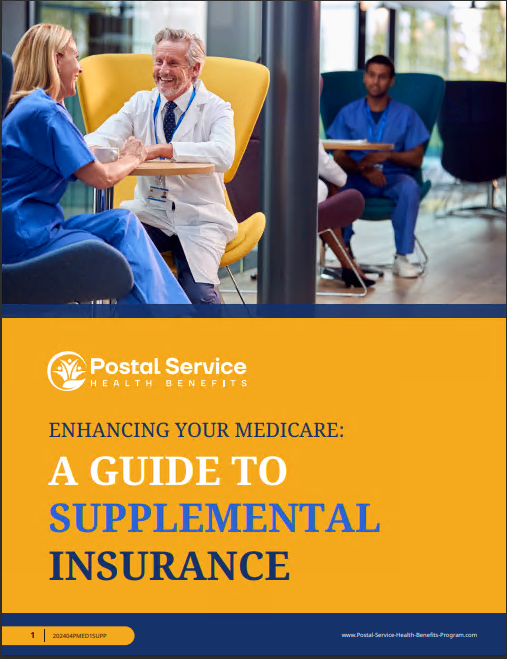Key Takeaways:
-
Medicare Supplement Plans can enhance your Postal Service Health Benefits (PSHB) by addressing out-of-pocket costs and coverage gaps.
-
Coordinating both benefits ensures financial protection and peace of mind for postal retirees navigating their healthcare needs.
Understanding PSHB for Postal Retirees
If you’re a postal retiree, you’re likely aware of the transition to the Postal Service Health Benefits (PSHB) program. Starting in 2025, PSHB replaces the Federal Employees Health Benefits (FEHB) program for USPS employees and retirees. While PSHB plans offer robust health insurance, there can still be gaps, especially as you age and your healthcare needs evolve. This is where Medicare and Medicare Supplement Plans step in to work alongside PSHB, creating a comprehensive safety net.
PSHB provides medical and pharmacy benefits similar to FEHB but tailored for postal workers. Medicare eligibility at age 65 introduces another layer of coverage, and when paired with a Medicare Supplement Plan, you’ll find a solution to address deductibles, coinsurance, and copayments that could otherwise strain your budget.
Medicare Basics You Should Know
Once you turn 65, Medicare becomes a central part of your healthcare strategy. Here’s a quick refresher on how Medicare works:
-
Medicare Part A: Covers inpatient hospital care, skilled nursing facility stays, and some home health services. Most people qualify for premium-free Part A if they’ve paid Medicare taxes for at least 10 years.
-
Medicare Part B: Focuses on outpatient care, like doctor visits, preventive services, and medical equipment. Part B has a monthly premium and an annual deductible.
-
Medicare Part D: Offers prescription drug coverage through private insurers approved by Medicare. Costs include premiums, deductibles, and copayments.
While Medicare provides extensive coverage, it doesn’t pay for everything. You’ll still face out-of-pocket expenses, which is where Medicare Supplement Plans, often called Medigap, come into play.
Bridging the Gaps with Medicare Supplement Plans
Medicare Supplement Plans are designed to fill the coverage gaps left by Original Medicare (Parts A and B). These plans can cover costs such as:
-
Deductibles: For both Medicare Part A and Part B.
-
Coinsurance and Copayments: Like the 20% coinsurance for outpatient services under Part B.
-
Excess Charges: Costs exceeding what Medicare approves for a service.
The beauty of Medicare Supplement Plans is their predictability. By paying a monthly premium, you avoid the financial surprises of hefty medical bills, allowing you to budget with confidence. These plans are standardized, meaning the benefits of a specific plan type are consistent across providers, ensuring transparency and reliability.
How PSHB and Medicare Work Together
PSHB plans already include comprehensive medical and pharmacy benefits, but once you’re eligible for Medicare, these two systems coordinate in a unique way:
-
Primary vs. Secondary Coverage: Medicare becomes your primary coverage when you’re retired and eligible, with PSHB serving as your secondary payer. This setup significantly reduces your out-of-pocket costs.
-
Prescription Drug Coverage: If you’re enrolled in Medicare Part D, your PSHB plan may integrate with it to ensure seamless coverage for medications.
-
Cost Savings: Many PSHB plans waive or reduce certain out-of-pocket expenses for retirees enrolled in both Medicare and a Supplement Plan.
With PSHB and Medicare working in harmony, you’re less likely to experience gaps in coverage, which is especially important during unexpected medical events.
Maximizing Benefits with Medicare Supplement Plans
By adding a Medicare Supplement Plan to your PSHB and Medicare coverage, you ensure even greater protection. Here’s how:
-
Out-of-Pocket Protection: Medicare Supplement Plans limit your liability for costs not covered by Medicare, such as hospital stays beyond 60 days or foreign travel emergencies.
-
Ease of Use: Claims are processed automatically between Medicare and your Supplement Plan, reducing paperwork and simplifying the billing process.
-
Travel Flexibility: Some plans offer additional benefits for medical care received outside the U.S., a feature not typically covered by PSHB or Original Medicare.
Deciding If a Medicare Supplement Plan Is Right for You
Not every postal retiree will need a Medicare Supplement Plan. The decision depends on factors like:
-
Your Health: If you anticipate frequent medical services or chronic condition management, a Supplement Plan can be a smart investment.
-
Your Budget: While these plans have premiums, they may offset higher costs from unexpected medical expenses.
-
Your PSHB Plan: Review how your specific PSHB plan coordinates with Medicare. Some plans may already provide robust secondary coverage, reducing the need for additional insurance.
Remember, timing matters. You have a six-month window to enroll in a Medicare Supplement Plan without medical underwriting once your Medicare Part B coverage begins. Missing this opportunity could result in higher premiums or denied coverage.
Common Questions About Medicare Supplement Plans and PSHB
1. Do I still need my PSHB plan after enrolling in Medicare and a Supplement Plan?
Yes, your PSHB plan provides additional benefits that complement Medicare and your Supplement Plan, such as vision, dental, and hearing coverage. These are not covered by Medicare alone.
2. Will Medicare cover all my prescription drugs?
No, that’s why you’ll need a Medicare Part D plan or rely on the integrated drug coverage in your PSHB plan. Be sure to confirm how your medications are covered.
3. What happens if I don’t enroll in Medicare Part B?
Skipping Part B could lead to penalties and gaps in coverage. Your PSHB plan may also increase your share of costs if you’re not enrolled in both Medicare Parts A and B.
Making the Most of Your Healthcare Coverage
Navigating PSHB and Medicare can feel overwhelming, but taking the time to understand how these programs work together will pay off in the long run. Here’s how to get started:
-
Review Your PSHB Plan Benefits: Familiarize yourself with how your plan coordinates with Medicare and what out-of-pocket costs you can expect.
-
Compare Medicare Supplement Plans: Evaluate the different levels of coverage to find one that matches your needs.
-
Enroll During Key Timelines: Don’t miss your Medicare Supplement Plan’s guaranteed enrollment period to avoid underwriting hurdles.
-
Reassess Annually: During the Medicare Open Enrollment Period (October 15 to December 7), review your coverage to ensure it still meets your needs.
Why Coordination Is Key for Postal Retirees
Combining PSHB, Medicare, and a Medicare Supplement Plan creates a powerful trifecta of coverage. Each piece plays a specific role: Medicare serves as the foundation, your PSHB plan provides additional benefits, and a Supplement Plan fills the gaps. By leveraging these programs together, you’ll minimize financial risks and maximize the value of your healthcare benefits.
Your Healthcare Future With Confidence
As a postal retiree, you’ve earned access to some of the most comprehensive healthcare benefits available. By understanding how PSHB and Medicare integrate, and considering the value of a Medicare Supplement Plan, you can make informed decisions that secure your financial and physical well-being.







